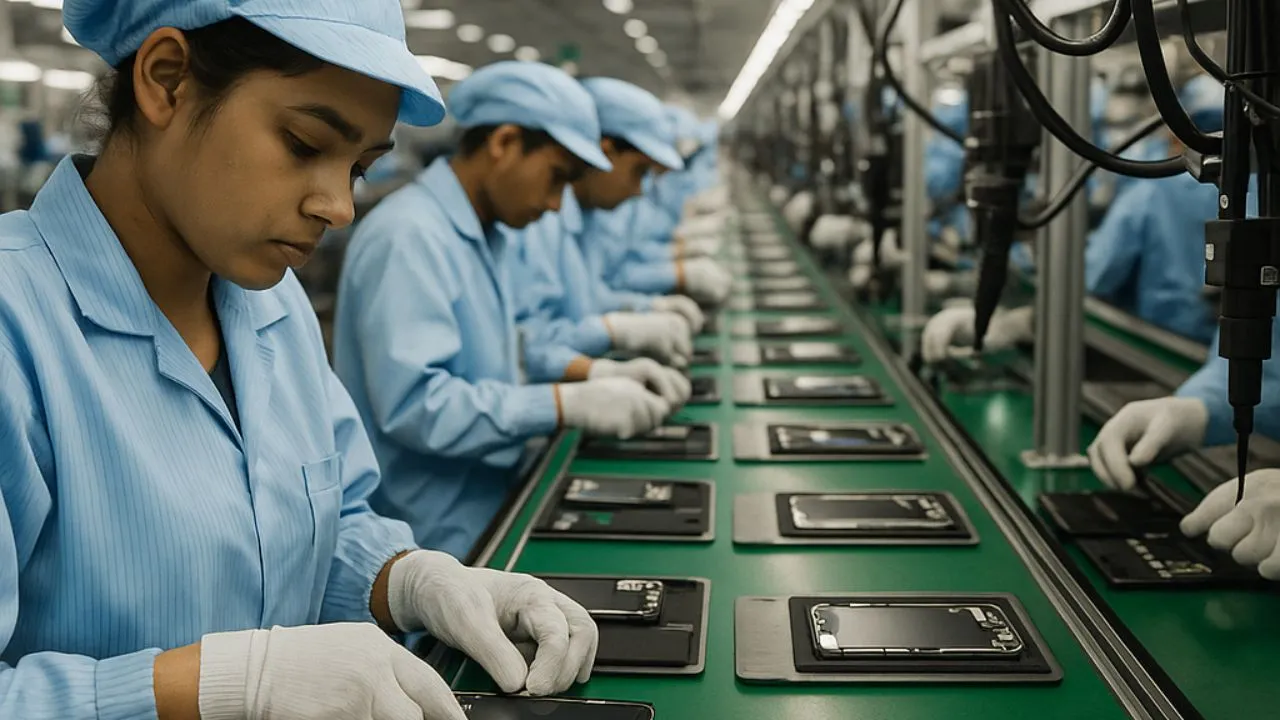
In India, rows of workers in uniforms bend over workstations, putting together some of the most coveted devices in the world (iPhones).
India, with its booming tech workforce and government-backed manufacturing incentives, has managed to become Apple’s second home. Almost one in every five iPhones is now assembled on Indian soil, and by 2026, Apple plans to make all its American-bound iPhones there.
It’s a stunning shift. A few years ago, most would have laughed at the idea that India could wrest even a sliver of global electronics manufacturing away from China. Yet here we are. Foxconn, Apple’s biggest supplier, has pledged another $1.5 billion to expand operations in India. Factories are booming, jobs are being created, and there’s a growing sense of pride that India is becoming “the next China.”
But beneath the surface of this manufacturing success lies a deeper, more pressing question: Can India innovate or will it always be the world’s workshop, never the architect?
Right now, India’s factories are like high-tech kitchens. They take pre-cut ingredients chips, batteries, cameras, all largely made in China and assemble them into beautiful devices. But the recipes? They’re still written elsewhere. The core technologies that power these phones like the silicon brains, the high-precision lenses, and the efficient batteries are imported. India might be stitching the seams, but the fabric is woven across the Himalayas.
This is where China has outpaced India. Not just by building things, but by designing them. Over the past decade, Chinese firms like YMTC (which makes advanced memory chips) and Sunny Optical (a key supplier of camera modules) have quietly, and quickly, climbed the tech value chain. They no longer just produce for the West they compete with the West.
The reasons are both structural and cultural.
India has no shortage of talent. Its tech brains are behind some of Silicon Valley’s biggest breakthroughs. Sundar Pichai and Satya Nadella, both Indian-born, now lead Google and Microsoft. But they didn’t stay in India. And that’s telling.
Innovation requires more than just intelligence it needs infrastructure, funding, a culture of risk-taking, and the freedom to fail. India’s bureaucratic red tape, inconsistent policies, and slow-moving institutions often stifle the very startups they claim to support. Patent systems are sluggish. Venture capital is limited. And the education system, while producing engineers in droves, rarely encourages curiosity or experimentation.
Compare that to China, where the government aggressively backed high-tech sectors, poured billions into research and development, and created entire industrial ecosystems almost overnight. Even under political restrictions, Chinese entrepreneurs were empowered sometimes pressured to lead in fields like AI, robotics, and chip design.
India doesn’t have to choose between being a factory and a think tank. It can be both. But doing so will require a mindset shift one that views local innovation not as a dream but as a necessity.
The government has taken steps. The Production Linked Incentive (PLI) schemes are bringing manufacturers to India’s shores. Startup India and Make in India campaigns aim to foster homegrown entrepreneurship. But policy isn’t enough. India must double down on education reform, ease business regulations, and most importantly, build bridges between academia, industry, and investors.
There's also a psychological hurdle to overcome. For too long, India has seen itself as a service provider to the world, not a creator. That must change. Indian companies should stop being content as suppliers and start dreaming of being originators of the next big phone, the next AI model, the next global breakthrough.
The world is rethinking globalization. Western countries want to reduce dependence on China. India, with its massive youth population, democratic governance, and growing tech base, has a rare window of opportunity.
But being Apple’s factory isn’t the endgame. If India wants to write the future, not just assemble it, it must learn to climb the ladder from screwdriver to silicon, from assembly line to innovation lab.
The pieces are there. The question now is: Will India put them together?